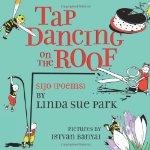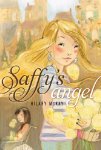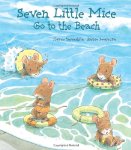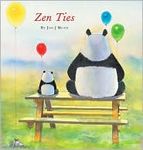When I studied zoology at university, one of my favorite subjects was entomology, which is not surprising because I have always had a fondness for insects. When I was little, I used to lie on my stomach and watch ants going about their business. I would bring them crumbs and marvel at the way they could carry my gifts away, even though the crumbs were two or three times bigger than the ants who were carrying them.
There are some insects though that I do not like. Mosquitoes and wasps for example. In today's poetry title you will meet a few insect species that are just plain "nasty."
Selected by Lee Bennett Hopkins
Illustrated by Will Terry
Poetry Picture Book
For ages 7 to 9
Penguin, 2012, 978-0-8037-3716-7
It is true that there are many species of
beneficial insects in the world. There are insects that garner our admiration
because of their beauty or because they provide us with a vital service, such
as pollinating our flowers and trees. Then there are the insects that we sincerely
wish were not around. There are the mosquitoes that bite us, the ticks that
suck our blood, the lice that itch, and the insects that quiet simply revolt
us. This book is about these insects, the ones that we love to hate.
The first poem is about the stink bug. In the
big scheme of things, this insect isn’t too bad. After all, it does not “hiss /
or sting / or bite.” This insect is an inoffensive looking creature, but it has
a secret, a smelly secret that you will find about (and regret) if you are
foolish enough to touch it.
Further on in the book we meet a species of
insect that is far more troublesome. Here are fleas who feast on animals and
humans, making our lives miserable. Not only do they give us nasty bites, but
these little pests “drink blood, spread disease.” It is quite easy to see why
the author of this poem, Marilyn Singer, says “Can’t we please get rid of
fleas?”
Fleas, chiggers, mosquitoes, wasps and other
insects bite and sting, but there are also the nasty little creatures who disgust
us because of their looks and habits. One of the worst examples of these are
maggots. Let’s face it, there is very little to like in these slimy larva who
love to eat their way through spoiled and rotten food. Some people feel the
same way about cockroaches, the tribe of insects that has managed to survive on
Earth for “three hundred million years,” and whose presence in our homes makes
us wish that our cave dwelling ancestors had “sprayed the whole / Family tree
for pest control.”
Readers who like a little nastiness in their
reading material are going to love this collection of poems. The sixteen poems
were written by poets such as Alice Schertle, Douglas Florian, and Rebecca Kai
Dotlitch. Some of the poems were especially commissioned for this deliciously
buggy title.
At the back of the book, Lee Bennett Hopkins
provides his readers with further information about the insects mentioned in
the book. If you thought the bugs in the poems were nasty before, wait until
you read the supplemental information about them!









